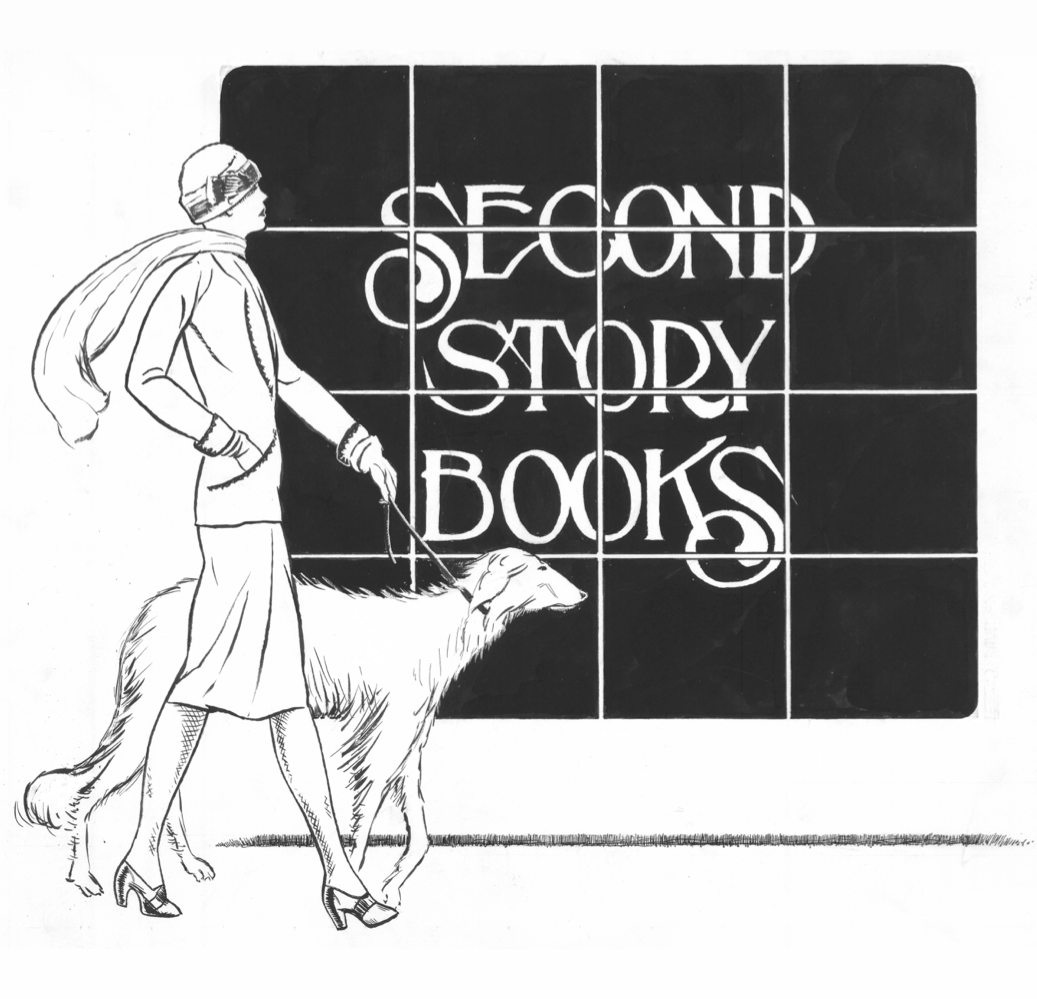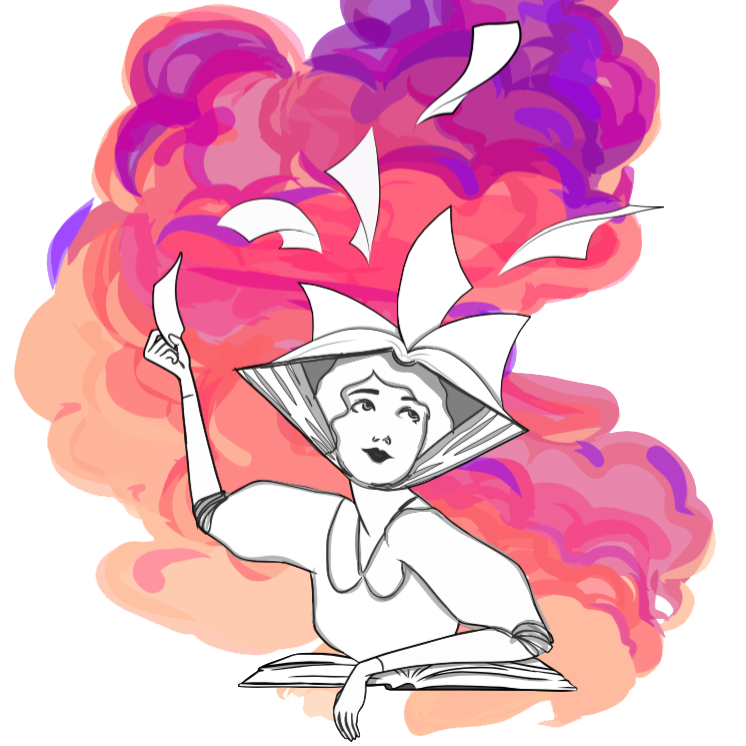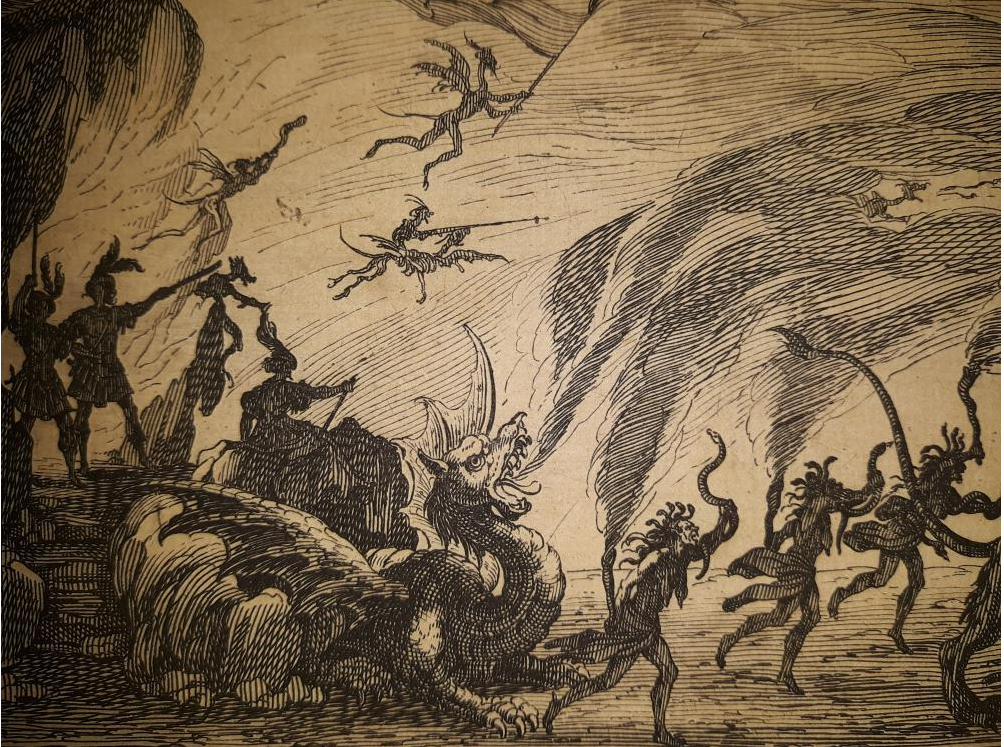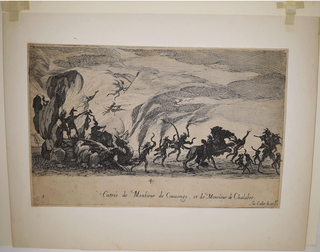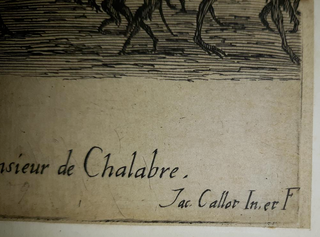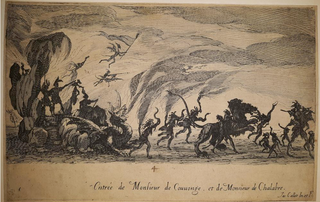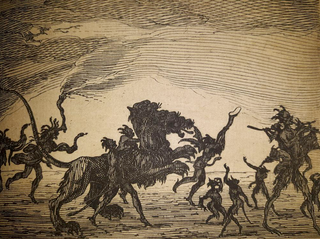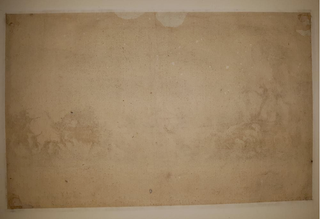Etching from “Le Combat a la Barrière”
Sebastien Phillipe, 1627. An etching by Jacques Callot entitled “Entrée de Monsieur de Couvonge et de Monsieur de Chalabre.” This etching is from “Le Combat a la Barrière” by Henri Humbert and was printed by Sebastien Phillipe in 1627. It depicts a lively procession of dancing and flying spirits accompanied by a dragon and griffin. The Metropolitan Museum of Art and the Rhode Island School of Design Museum have this etching as part of their permanent collections. Condition: very good though age toned. A small number “4” is written in ink in the lower margin not affecting the image. The etching is affixed on the verso with archival tape to paper with a 9 ½” x 6” opening (see image). It is signed in plate lower right “Jac. Callot In. et F”.
Dimensions
w 9.5 in x h 6 in.
1329793
Shelved Dupont Bookstore
Price: $640
NOTES
In the early 17th century, the ruling classes of Europe held on to the medieval ideal of the Christian knight, who defined his honor and nobility in terms of physical courage. Courtly performances often portrayed this ideal with references to the glorious victories of medieval knights or to ancient Greek and Roman heroes. The Combat at the Barrier was staged at the court of Lorraine on February 14, 1627, in honor of the Duchess of Chevreuse, a favorite of Duke Charles IV. Callot’s prints commemorating the event were paired with text by the court poet Henry Humbert and bound into a book.
Jacques Callot (Nancy, 1592-Nancy, 1635) was a Baroque draftsman and engraver of the Duchy of Lorraine. Callot’s father was the master of ceremonies at the court of the Duke of Lorraine. He moved to Rome, where the Frenchman Philippe Thomassin taught him the technique of engraving. Jacques’ contribution to the art of engraving was not only creative, but also technical, as he introduced the use of a special luthier varnish for etching.
